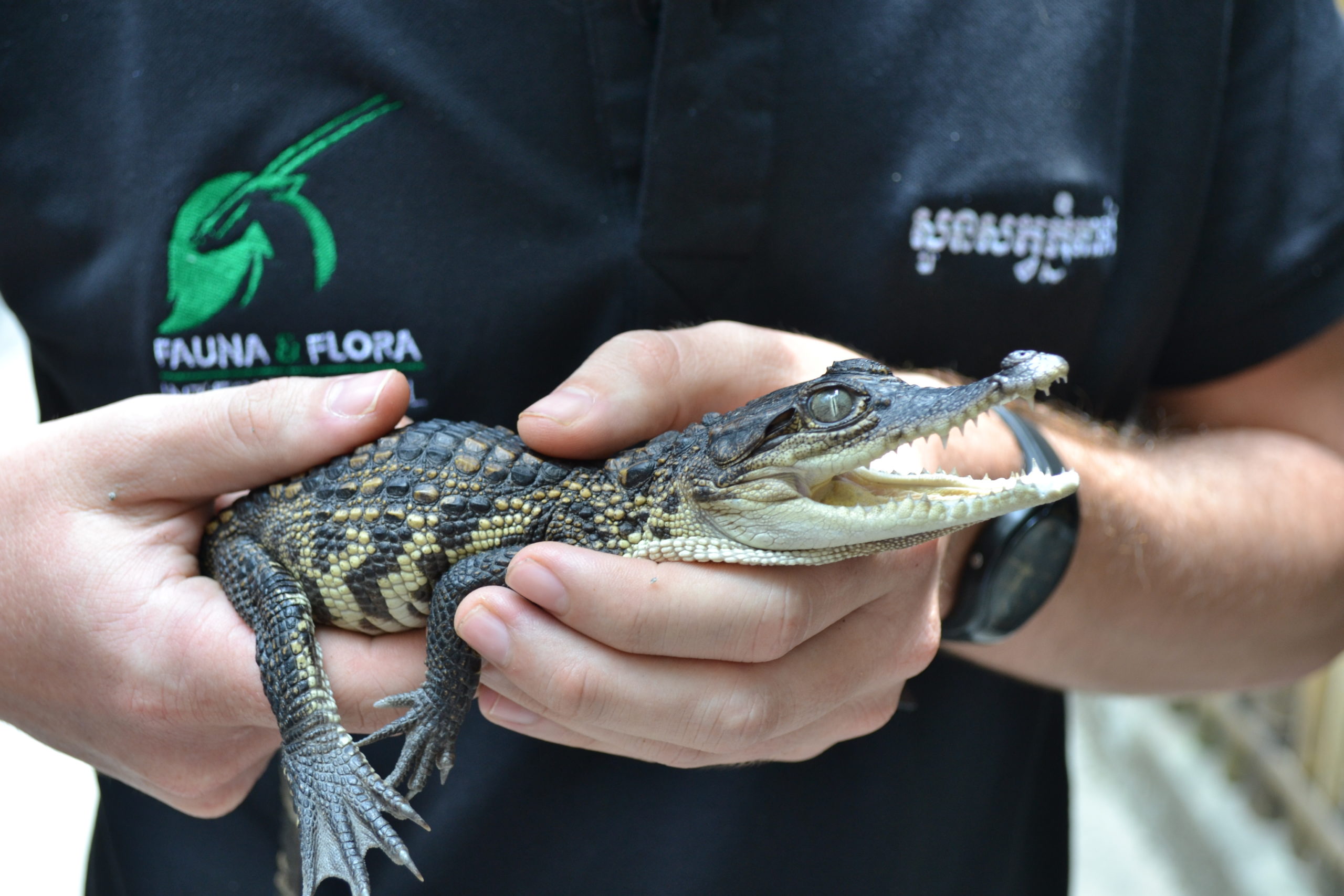Ten baby Siamese crocodiles have been spotted in the wild in Cambodia in recent weeks, raising hopes that conservation efforts have achieved a genuine breakthrough for a species once believed to be extinct in the wild.
The hatchlings – seen in late January by Fauna & Flora International (FFI) conservationists, but only publicly announced on February 19 – were found at the Veal Veng crocodile sanctuary, a protected part of the Steung Knoung River in Cambodia managed by FFI.
This is only the second time in a decade that baby Siamese crocodiles have been seen in the wild in Cambodia, and is the largest number of hatchlings ever sighted by conservationists in the country.
Pablo Sinovas, FFI’s flagship species manager in Cambodia, described the sighting as a “hugely significant” development.
“We’ve been working towards recovery for the last 20 years, and in that time there have been three recorded cases of Siamese crocodile babies sighted in the wild,” Sinovas told Southeast Asia Globe. “Now this is one of those cases, and it’s also the one where the largest number of babies was seen.”
The Siamese crocodile is classed as critically endangered on the IUCN Red List, with just 250 individuals estimated to be surviving in the rivers of Cambodia – believed to hold the largest remaining populations in the world. Though research is scant outside the country, Sinovas said neighbouring countries may be home to as few as “tens” of Siamese crocodiles.
While the species has survived in recent decades thanks to the help of captive breeding programmes, Sinovas said it’s an encouraging sign to see hatchlings born without human assistance.
“This species is on the pathway to recovery,” he said. “Of course, [it] still faces threats and we can’t be complacent about its future, but this is definitely good from the point of view of showing there’s reproduction in the wild. That’s a first step in proving that a population is viable.”
An FFI-led team of scientists rediscovered the Siamese crocodile in 2000 during surveys in the Cardamom Mountains in southwest Cambodia. By then, the crocodiles had disappeared from 99% of their original range and, until their rediscovery, were widely believed to be extinct in the wild.
The Siamese crocodile was historically threatened by human harvesting for placement in commercial farms, but now their primary threats in Cambodia are habitat degradation and accidental death due to entanglement in fishing nets.
To get their numbers back up in the wild, FFI manages a captive breeding facility for the crocodiles outside of Phnom Penh in partnership with the Cambodian Forestry Administration.

Community crocodile wardens patrol this critical habitat regularly, they go out every month through really tough forest to get to the sites. They spend days and nights along these rivers monitoring crocodile populations
Pablo Sinovas, FFI’s flagship species manager in Cambodia
At this facility, baby crocodiles are reared in captivity for up to three years until they are able to fend for themselves, at which point they are released into strictly protected community crocodile sanctuaries. These sanctuaries are managed in consultation with local communities and are protected by local community wardens.
The most recent release was in December, when ten Siamese crocodiles were released into sanctuary areas along the river. Counting those animals, FFI has released since 2012 a total of 111 crocodiles back into the wild.
In addition to the positive news regarding wild hatchlings, last month also saw the first DNA test of Siamese crocodiles in Cambodia. This DNA testing is done to ensure the released animals are pure-bred Siamese crocodiles rather than hybrids between Siamese and saltwater crocodiles.
“If hybrids get into the wild it could contribute to the dilution of the genetic makeup of this species which has been around for millions of years,” Sinovas said.
The testing was performed in collaboration with the Royal University of Phnom Penh with technical support from FFI and the Royal Zoological Society of Scotland.
Sinovas praised FFI’s network of partners in Cambodia that have made this rebound of Siamese crocodiles possible.
“This collaboration in particular has been with [the Ministry of Agriculture Forestry and Fisheries] but we work with the government at large too,” he said.
“We work with communities to protect the habitat. We also engage community crocodile wardens who patrol this critical habitat regularly, they go out every month through really tough forest to get to the sites. They spend days and nights along these rivers monitoring crocodile populations and making sure the threats to these populations are minimised.”
For more information on Fauna & Flora International’s conservation work in Cambodia, you can visit their website.


